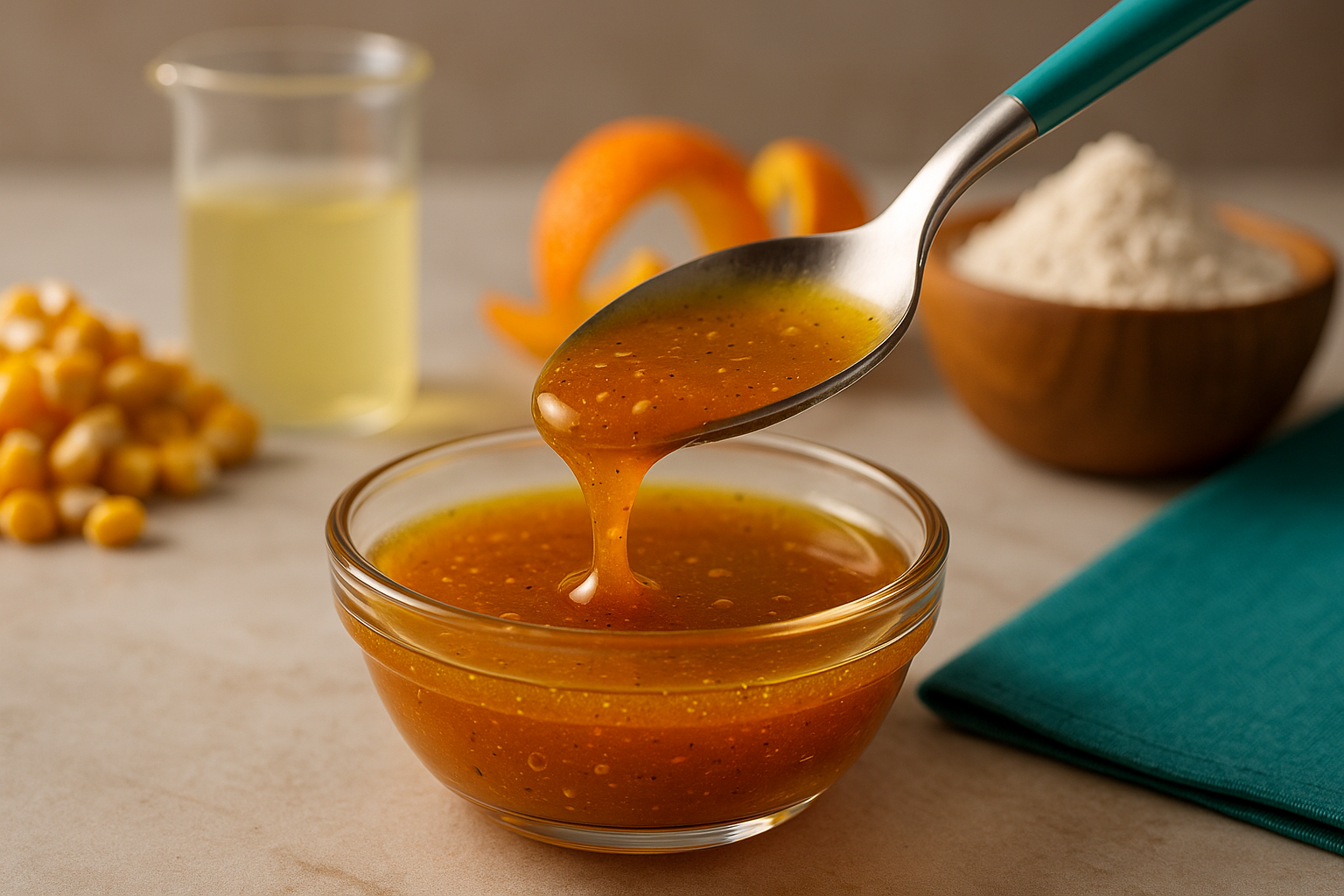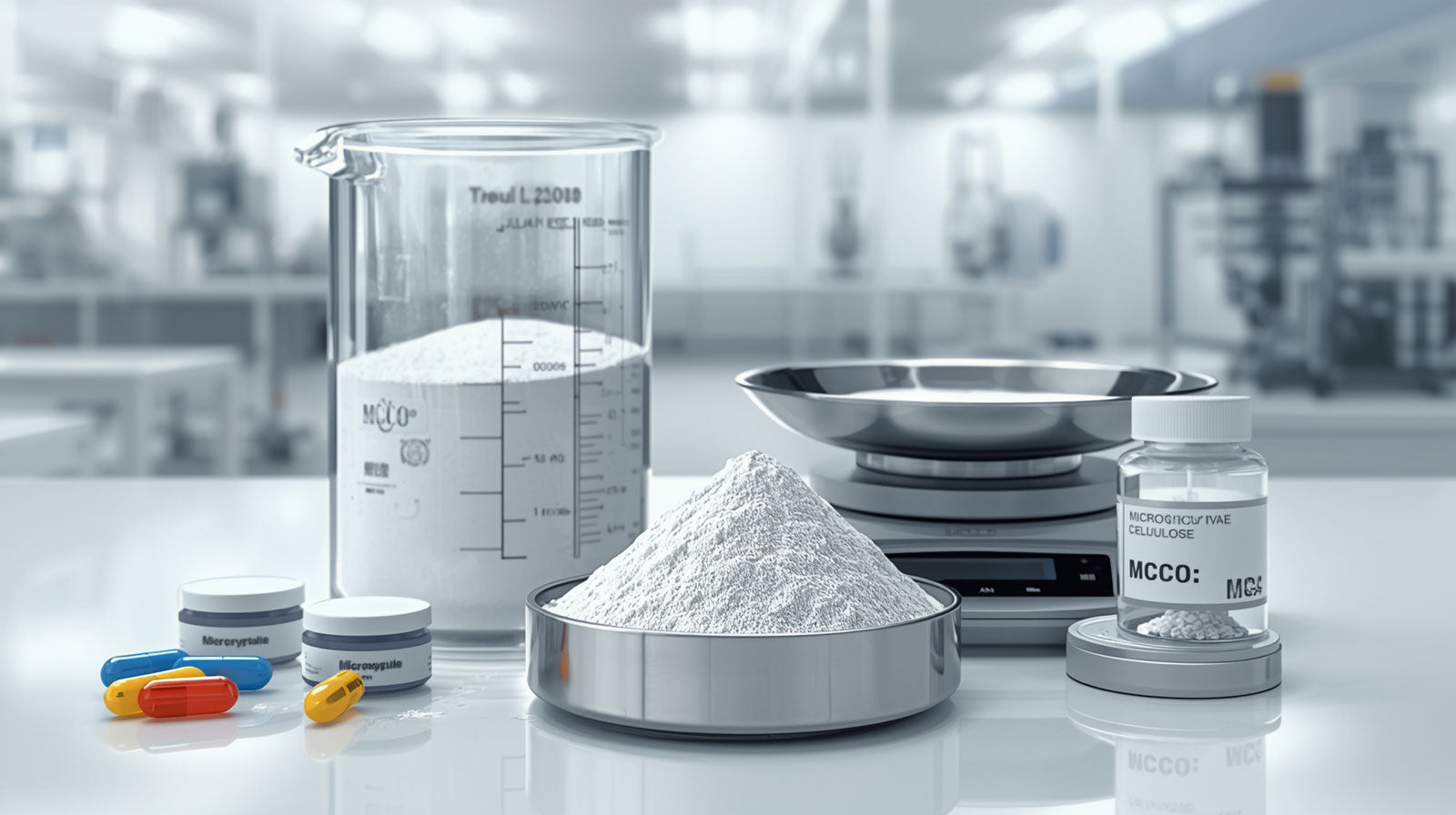
Xanthan Gum Explained: Uses, Safety, and the Science
SUBSCRIBE TO OUR BLOG
Promotions, new products, and recipes.
🧪 Xanthan Gum Explained: Uses, Safety, and the Science
When you pour a smooth salad dressing or slice into a perfectly structured gluten-free muffin, xanthan gum is often the unseen ingredient holding everything together. This guide covers what xanthan gum is, why it was developed, how it’s used, and what regulators say about its safety, with primary, non-competing sources.
The Discovery and Development of Xanthan Gum
Long before it became a staple in gluten-free baking and modern gastronomy, xanthan gum began as a scientific experiment in the 1950s aimed at solving a practical industrial problem - how to create a natural thickener that could withstand heat, acid, and salt without breaking down.
Researchers at the Northern Regional Research Laboratory (NRRL) in Peoria, Illinois - part of the U.S. Department of Agriculture (USDA) - first identified the bacterium Xanthomonas campestris as capable of producing a uniquely viscous, stable polysaccharide during fermentation.
After nearly a decade of refining culture conditions and purification methods, the team successfully commercialized the process in 1963, naming the resulting material xanthan gum after its bacterial origin.
The work was led by Allene Rosalind Jeanes, a pioneering American chemist also known for developing dextran, a blood plasma substitute used during the Korean War. Jeanes and her USDA team recognized that xanthan’s exceptional heat stability, pH tolerance, and shear-thinning behavior made it ideal not only for food but also for industrial uses such as drilling muds, paints, and cosmetics.
In 1968, the U.S. Food and Drug Administration (FDA) approved xanthan gum as a food additive, and it quickly found applications across salad dressings, sauces, dairy emulsions, and gluten-free formulations.
By the late 1970s, its use had expanded globally - driven by food manufacturers seeking a more consistent, plant-based alternative to starches and animal-derived gelatin.
Today, xanthan gum remains one of the most extensively studied and widely used microbial polysaccharides, valued for its stability, versatility, and compatibility with plant-based and clean-label formulations. What started in a USDA lab now underpins everything from vegan sauces to precision-engineered molecular gastronomy gels, symbolizing the marriage between culinary creativity and food science innovation.
What Is Xanthan Gum Made Of?
Xanthan gum is a high-molecular-weight polysaccharide produced by fermenting plant-derived sugars with Xanthomonas campestris. In manufacturing, the broth is pasteurized, alcohol-purified, dried, and milled. EFSA characterizes its structure as repeating units of D-glucose, D-mannose, and D-glucuronic acid in a branched backbone (EFSA 2017 re-evaluation of E415).
Is Xanthan Gum “Natural”?
It’s nature-derived via fermentation, but whether it’s “natural” is a labeling gray area. The U.S. FDA has no formal definition of “natural,” and the EFSA Panel treats xanthan as an approved food additive produced by microbial fermentation.
What Does Xanthan Gum Do in Food?
In foods, xanthan gum functions as a thickener, stabilizer, and suspending agent - it raises viscosity, reduces phase separation, and keeps fine particles uniformly dispersed. These technological functions are explicitly authorized at good manufacturing practice levels per the EFSA scientific opinion.
Is Xanthan Gum an Emulsifier?
Not in the classic surfactant sense. Xanthan gum does not reduce interfacial tension; instead, it stabilizes emulsions by increasing the viscosity (and often yield stress) of the water phase, which slows droplet movement and coalescence. Beverage studies show synergy between xanthan and surfactants - see the Jungbunzlauer foaming & stability study (2024).
Is Xanthan Gum Safe?
The EFSA 2017 evaluation found no safety concern at reported exposure levels and concluded there was no need for a numerical ADI. A human tolerance study summarized by EFSA reported that very high intake (~15 g/day) increased gas and stool output, but without systemic toxicity. For infants, the EFSA 2023 review also reported no safety concerns at assessed use levels in specialty formulas.
Vegan, Gluten-Free, and Diet Compatibility
Because it is microbially fermented from plant sugars, xanthan gum is generally vegan-friendly (verify the fermentation nutrient source if you avoid all animal inputs). It’s also gluten-free and essential to structure in GF baking; see the Jungbunzlauer report on gluten-free bread for improvements in gas retention and crumb.
Can Xanthan Gum Cause Bloating?
Occasionally at high intake. Xanthan behaves as a fermentable soluble fiber; the EFSA review notes GI effects (gas, looseness) at ~15 g/day, far above typical food use levels (usually ≤0.5%) (EFSA 2017).
How to Use Xanthan Gum (Practical Ratios)
- Cold or hot thickening: Hydrates without heat; start at 0.1-0.3% (w/w) for sauces and beverages. Shear well to avoid clumps.
- Cornstarch replacement (sauces): Begin around 1/8 tsp per cup of liquid, then adjust texture.
- Gluten-free baking: About 1/4 tsp per cup of flour for cakes/cookies; slightly higher for chewy breads.
Shelf Life & Handling
As a dry powder, xanthan gum is highly stable for roughly 36 months when kept cool, dry, and airtight. See the Ingredi technical sheet. Once hydrated, use preservatives or refrigeration to limit microbial growth.
Choosing the Right Grade
Performance depends on particle size/grade. The Jungbunzlauer ingredient page outlines: FN (80-mesh) for general sauces/baking, FF (200-mesh) for faster hydration in beverages, and clear-solution variants where optical clarity matters.
FAQs
- How much should I use? For sauces, start around 0.1-0.3% (w/w); in GF baking, about 1/4 tsp per cup of flour is typical (usage context in EFSA 2017).
- Does it thicken cold? Yes - xanthan gum hydrates and thickens without heating (EFSA 2017).
- Is it keto-friendly? Typical doses contribute negligible digestible carbs (very low use levels; see EFSA exposure in EFSA).
- Allergy considerations? Fermentation sugars can come from wheat/corn/soy, but the final product is essentially protein-free; verify substrate with your supplier (EFSA 2017 manufacturing description).
- Can it replace cornstarch? In sauces, yes - xanthan is more potent by weight; start small and use high shear (use-level context in EFSA 2017 + supplier practice).
- Can it replace baking powder? No. Baking powder leavens, while xanthan is a binder/thickener (functional roles per EFSA 2017).
- Can it replace gelatin? No - xanthan thickens but doesn’t form firm, thermoreversible gels; use gelatin or agar for set gels (rheology context: JBL 2024).
- Best grade? Match the task: FN (80-mesh) for general cooking/baking; FF (200-mesh) for beverages; clear-solution where clarity matters (Jungbunzlauer).

|
About the Author Ed is the founder of Cape Crystal Brands, editor of the Beginner’s Guide to Hydrocolloids, and a passionate advocate for making food science accessible to all. Discover premium ingredients, expert resources, and free formulation tools at capecrystalbrands.com/tools. — Ed |
Enjoyed this post? Subscribe to The Crystal Scoop
Food-science tips, ingredient know-how, and recipes. No spam—unsubscribe anytime.
- Choosing a selection results in a full page refresh.



